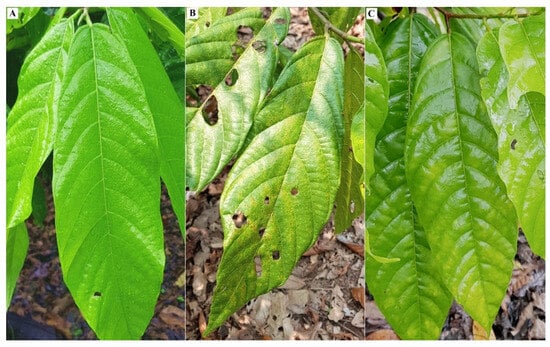- Article
Genomic and Phylogenetic Evidence for a Novel Emaravirus Infecting Cacao (Theobroma cacao L.) in Amazonas, Peru
- Angel F. Huaman-Pilco,
- Nicola Fiore and
- Oscar P. Hurtado-Gonzales
- + 5 authors
Preserving Peruvian cacao germplasm requires preventing the spread of pathogens such as viruses, yet cacao viral diseases in Peru remain poorly studied. In this study, we characterized the viral sequences associated with native cacao trees from the department of Amazonas, northwestern Peru. Leaf samples from two symptomatic plants (mosaic, yellowing, leaf deformation) and one asymptomatic plant were collected from the cacao germplasm bank of the Universidad Nacional Toribio Rodríguez de Mendoza de Amazonas. RNA high-throughput sequencing identified four RNA segments consistent with the genus Emaravirus: RNA1 (7142 nt; replicase P1), RNA2 (2225 nt; glycoprotein P2), RNA3 (1269 nt; nucleocapsid P3), and RNA4 (1286 nt; movement protein P4), sharing 32.6–45.9% amino acid identity with European mountain ash ringspot-associated emaravirus (EMARaV). Phylogenetic analysis of P1–P4 proteins placed this virus in a distinct lineage, confirming it as a novel species, Theobroma cacao emaravirus A (ThCEV-A). Specific RT-PCR detected ThCEV-A in 11 additional accessions, with symptoms including yellow mosaic and mottling. This study documents for the first time the presence of a novel Emaravirus in cacao, highlighting the need to assess its epidemiology, vector(s), and potential impact on cacao production in its center of origin.
16 December 2025


